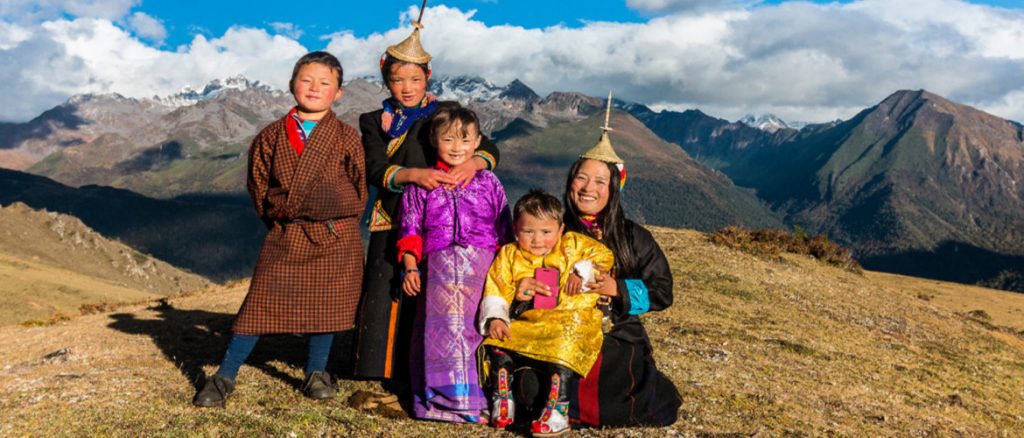Language

Bhutan, nestled in the eastern Himalayas, boasts a linguistic landscape as diverse and captivating as its scenic terrain. With over nineteen dialects spoken across the country, Bhutan’s linguistic richness is deeply rooted in its geographical features, characterized by high mountain passes and deep valleys. These natural barriers historically compelled communities to live in relative isolation, fostering the development of distinct languages and contributing to the survival of unique linguistic traditions.
The national language of Bhutan is Dzongkha, the mother tongue of the Ngalops in western Bhutan. The term “Dzongkha” translates to the language spoken in the Dzongs, monumental fortresses that serve as both administrative hubs and monasteries. Beyond Dzongkha, two other major languages hold significance in Bhutan: Tshanglakha, the language of the Tshanglas in the east, and Lhotshamkha, spoken by the southern Bhutanese of Nepali origin.
Bhutan’s linguistic diversity extends to various other dialects, each with its own cultural and regional nuances. Khengkha and Bumthapkha are spoken by the Khengpas and Bumthap people in central Bhutan, respectively. Mangdepkah is the language of Trongsa residents, while Cho Cha Nga Chang Kha is spoken by the Kurtoeps. Southern Bhutan is home to unique dialects spoken by communities like the Sherpas, Lepchas, and the Tamangs. Unfortunately, two dialects, Monkha and Gongduepkha, are on the verge of extinction, emphasizing the need for efforts to preserve and celebrate Bhutan’s linguistic heritage.
The languages of Bhutan not only reflect its rich cultural tapestry but also play a vital role in shaping the identity of its diverse communities. They are a testament to the resilience of Bhutanese people and their ability to thrive amidst the challenges posed by their unique geography.
